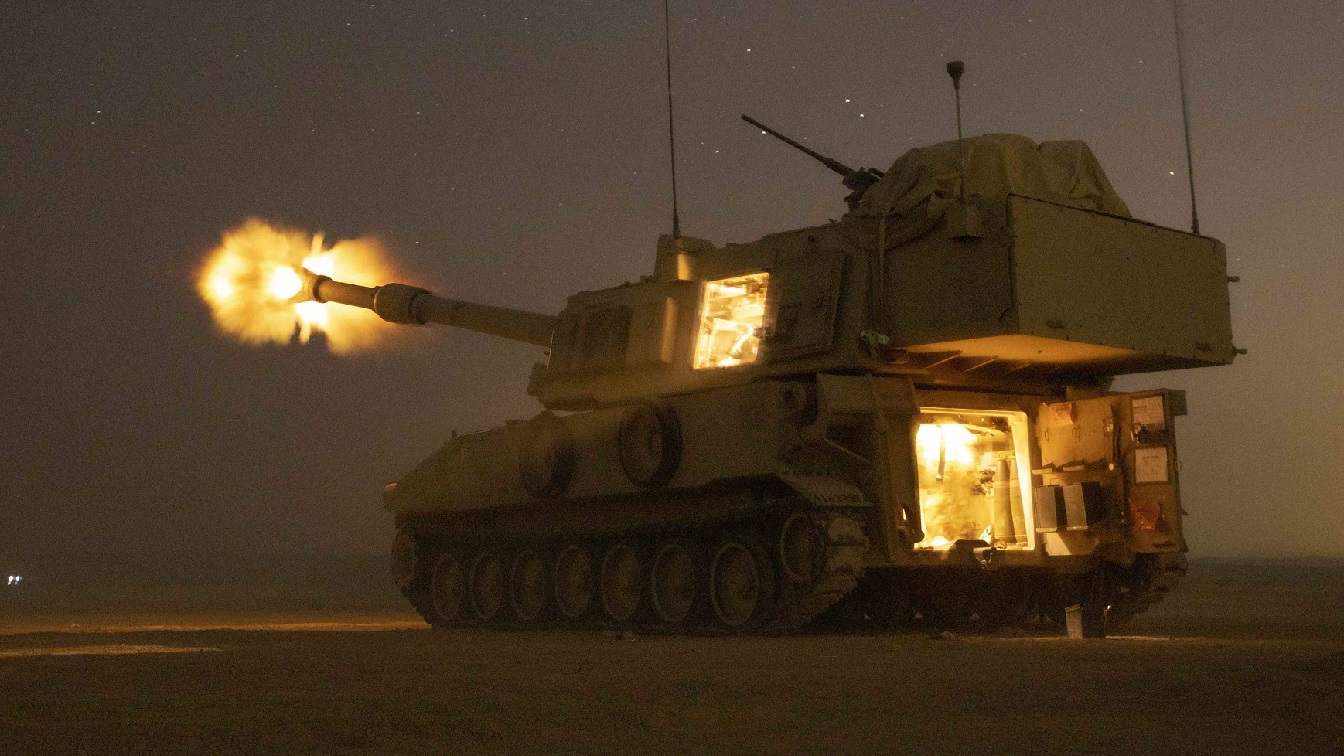M109A6 Paladins, the self-propelled howitzers donated to Ukraine by the United States, have played a major role in the country’s southern counteroffensive which has seen it liberate the strategically important village of Robotyne.
The Paladin requires four operators – a section commander, driver, gunner, and ammunition handler – and has been in operation in its A6 form since 1994. So far this year, the U.S. has donated 18 of the vehicles, while Italy, Latvia, Norway, and the United Kingdom have agreed private purchase arrangements with Ukraine.
In an interview with Ukrainian media outlet United24, the 47th Mechanized Brigade said they had been using the Paladin to fire standard 155mm howitzer shells at targets within 10km, despite a range of up to 24 km.
Role In Robotyne
According to the brigade, the Paladin’s ability to hit Russian targets and retreat before the enemy could return fire played a significant role in the liberation of the village in the Zaporizhzhia Oblast. During intense fighting, a single howitzer could fire between 50-100 shells a day, often using U.S.-donated cluster munition to combat Russian trenches.
So effective have the Ukrainians’ use of the weaponry been that it prompted a rare concession from Russian Duma member Andrey Gurulev. On Friday, he posted on his Telegram channel that Ukrainian troops “have switched to squeeze-out tactics, they are massively using cluster shells, inflicting fire on the strong points of our units and assault groups.”
“They have a lot of ammunition, they are trying to burn out absolutely everything,” he added, before expressing that the area recaptured “created conditions for the impossibility of using anti-tank missiles by our helicopters” which wreaked havoc on Ukrainian troops in the early stages of the summer counteroffensive.
What Are Squeeze Out Tactics And How Are Ukraine Using Them?
Squeeze out tactics refer to the strategy of surrounding and isolating enemy units before committing to a full-scale attack. Generally, units will seek to encircle the enemy, cut off supply lines and strike infrastructure such as roads and railways to limit mobility.
The Ukrainians are using cluster munition in a shift away from striking direct targets. The somewhat random nature of cluster munition covers a larger area, particularly helpful when the enemy is dug into formidable trenches.
Combined with the shoot-and-scoot maneuvers of the Paladin, Russia is unable to return accurate fire by the time shelling has finished. With a single howitzer firing scores of shells in a single day, such a repeated barrage of attack leaves Russian units exasperated, forcing them to retreat.
The strategy has been particularly effective in Robotyne, where Ukrainian forces have broken through a major line of Russian defense. If this continues, Russian units located west of the breakthrough will be isolated with no supply routes from the east, which could lead to liberation of land south of the Dnipro River.
Shay Bottomley is a British journalist based in Canada. He has written for the Western Standard, Maidenhead Advertiser, Slough Express, Windsor Express, Berkshire Live and Southend Echo, and has covered notable events including the Queen’s Platinum Jubilee.

